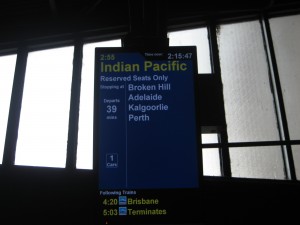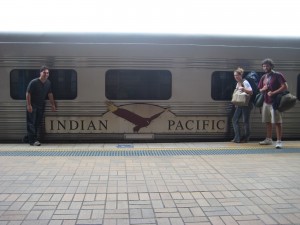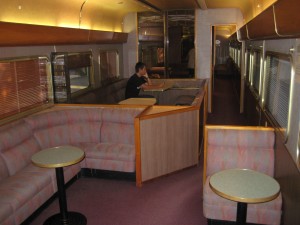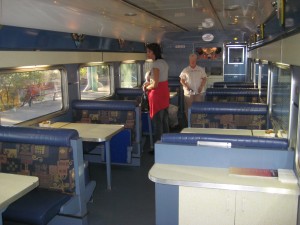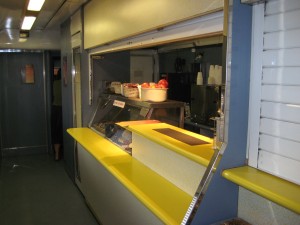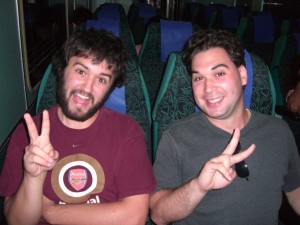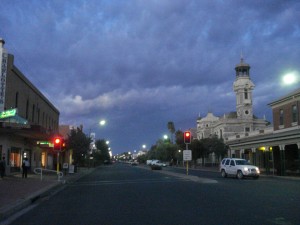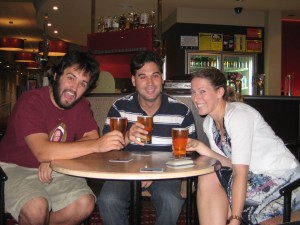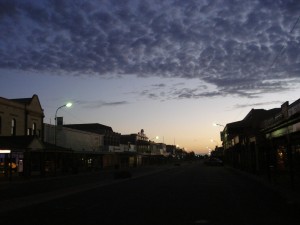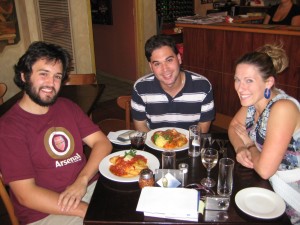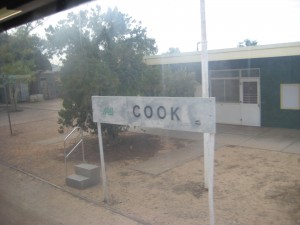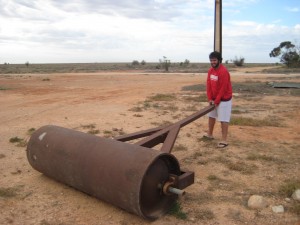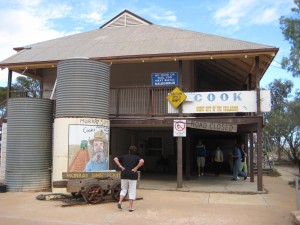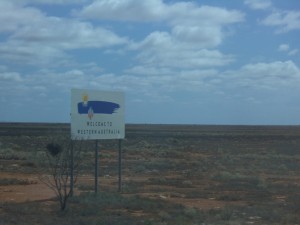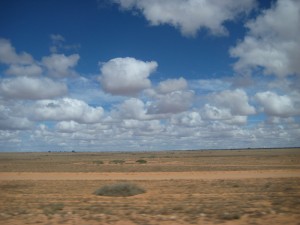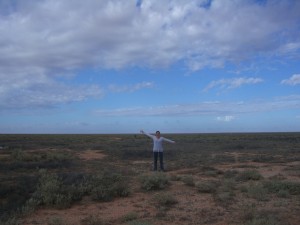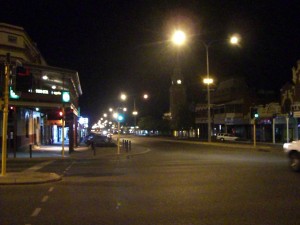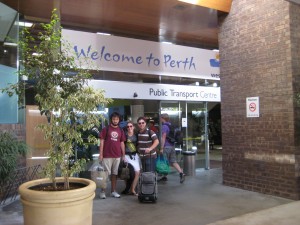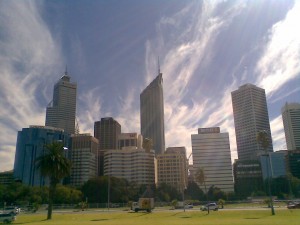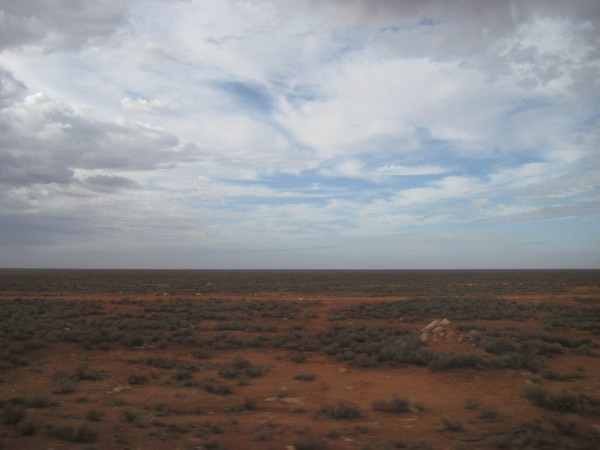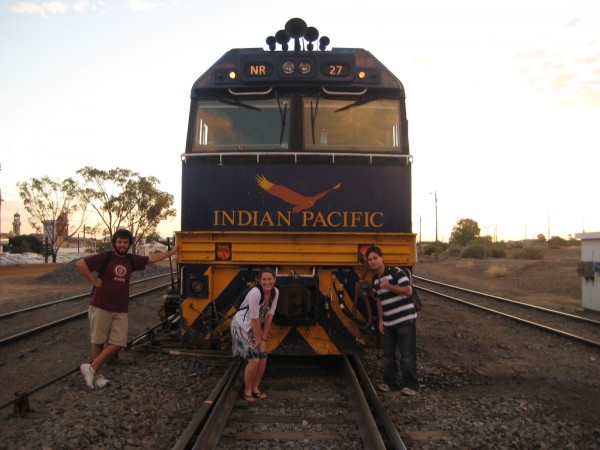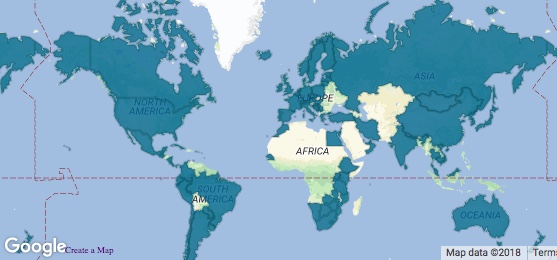Crossing Australia by train aboard the Indian-Pacific is one of the most epic train journeys in the world. The trip spans 4,352km (2,704 miles) from Sydney on Australia’s east coast all the way to Perth on the extreme west coast. This trans-continental journey takes 65 hours to complete and brings passengers from the lush city of Sydney, through the Blue Mountains then into the interior of the Australian outback and all the way across the Nullarbor Desert. While living in Sydney two dear friends and I set out on this journey of journeys hoping to experience the “real Australia” and get a sense of just how massive this country we had come to call home really was.
Getting Comfy
The Indian-Pacific is operated by Great Southern Rail and to save money, my friends Travis, Becca and myself would all be traveling in “Red Service” with day/night seats. This is the cheapest way you can travel on the Indian-Pacific and is basically means you don’t have a bed for three days. This seemed like a good idea at the time but by the end of this journey it would have us all pretty sleep deprived. Our actual accommodations were just two-by-two seats that are kinda like big airline seats. Not the most comfy but they did tilt back a bit. There was a shower on one end of the car and toilets on the other. Then the next car over was a lounge car and beyond that a dining car that resembled a 1950’s style diner where you could purchase food.
The Route
The 4,352km route begins in Sydney and heads basically due west across the continent. Major stops include the silver mining town of Broken Hill, Adelaide where the train goes south slightly and then back north, the gold mining town of Kalgoorlie and then finally, Perth in Western Australia. There are tons of smaller stops that are made throughout the journey but most you don’t get off the train for. We had one additional stop that let us off the train and that was the tiny town of Cook. Details on all of these stops to follow.
Broken Hill
Our second day abroad the Indian-Pacific started with a stop in the town of Broken Hill. Broken Hill was an interesting place. Not really. We had a little over an hour to explore which seemed like very little time. It was in actuality…an eternity. Disembarking the train we were greeted by some friendly local artisans eager to sell their wares on the train platform and in addition to the artisans…about 40 million flies. Flies like the plague. The roads in town were empty, car-less and people-less. We headed up to the front of the train and took a ton of pictures with the pretty locomotive emblazoned with Indian Pacific and the eagle logo. Some more walking brought us to the Broken Hill NSW Social Club which apparently is open even at 7am. We sat and had some beers (why not?) and played the pokey a bit. All too soon it was time to return to our home aboard the Indian Pacific and as we headed back just as a fly flew into my friend Becca’s mouth and met its demise. It was more amusing then tragic from my perspective.
Adelaide
The capital of South Australia is the most significant stop along the route of the Indian-Pacific and we arrived there near the end of our second day on board. We had three whole hours to explore the city and since it was Easter Sunday, our goal was to have a proper Easter meal. We attempted to go to Red Oaks restaurant in the Festival Building since we heard they have kangaroo and emu and stuff like that on the menu, but they were closed for the holiday so we ended up at Passatempo Caffe on Gouger Street which is sort of the main-street area with lots of restaurants and shops. Adelaide seemed like a nice city. Small, but very inviting and comfortable.
Port Augusta
We stopped in Port Augusta a bit before midnight at the end of the second day but nobody was allowed off the train unless Port Augusta was your final destination. My Lonely Planet described Port Augusta as “a desolate tatty wasteland” so not being allowed off didn’t seem so bad really.
Cook
Not all the trains stop in Cook but we needed some service and water so we had the opportunity to get out and look around. Before being allowed to disembark in Cook we were given a series of snake warnings and a bit of a history lesson. It seems Cook (which didn’t even appear in my Lonely Planet guidebook) is basically a ghost town. What was once an up and coming community, albeit it being in the middle of nowhere, is now home to only five people. The town looks as if there was some sort of nuclear disaster and everyone cleared out at a moment’s notice leaving doors open and belongings scattered. Creepy. This is a town you can walk across in probably about five minutes flat with no paved roads whatsoever and the largest structure being a school with an old pool and eerie playground all very much abandoned and well past their prime. The “center” of town was marked by a large stone commemorating the planting of trees in Cook in 1982 making it an “Oasis in the desert”. I guess that was true, the town did have some trees. The school didn’t even have locked doors and you could wander in and around the tiny building with long abandoned playground equipment, dilapidated fences and old train cars scattered about. The pool was long ago covered up and surely empty with most of the letters in COOK POOL long gone missing. Past the school…nothing but endless desert. On our way back to the train we passed a group of ants each about the size of a cotton ball. A colony of them could probably take down a human being if it wanted. All of this aside, Cook was actually a neat place to see and a very different side of Australia then I was used to.
Rawlinna
We didn’t get off the train in Rawlinna but just passing through we could see the town’s old mining infrastructure. Around this time we also passed through an area the British used to test their nuclear weapons back in the day. If the endless desert wasn’t a reminder of how remote we were, this fact sure was.
Kalgoorlie
Kalgoorlie was our last stop on our last night on the train and after days of eating ramen noodles and nutella on stale bagels we were anxious to get a real meal. We opted out of the organized tour and set off to find some real food. Compared to other stops we had made thus far, Kalgoorlie was a major metropolis. This city of nearly 30,000 people is an old gold mining town and there were no shortage of chain resturants as we walked through town. We eventually ended up at “Wild West Saloon” inside the Exchange Hotel at the biggest intersection in town. The place definitely felt like the wild west and for some reason all the waitresses wore nothing by underwear. Maybe we were just hungry, but the food was excellent and portions were huge. I went to use the restroom after we finished eating and while I was in there some dude ran in and begain violently vomiting in the adjacent stall. I decided it was time to leave the Wild West Saloon at that point.
Perth
Our trans-continental overland train journey had come to a conclusion and we were no longer in the middle of nowhere…we were in the middle of a huge city…that happens to be in the middle of nowhere. Perth is regarded as one of the most remote major cities on earth and it really is far from everything – even the train station. We had to take a local metro train from the Indian Pacific terminus three stops to “Perth City” where we would be able to walk around the city. We checked out the Swan River, Swan Bells, the Supreme Court Gardens and the outdoor mall areas of Murray and Hay Street. Perth is an extremely small, very walk-able city. We didn’t spend too much time there though as our trip was continuing with a road trip up the western coast of the continent to Monkey Mia. But that’s a story for another post.
Life on Board
As interesting as the journey from Sydney to Perth is, there is definitely a good amount of down time during the 65 hour trip, especially when your bed is an upright chair. We passed the hours with endless games of Scrabble, meeting some of the other passengers, sleeping in our chairs or in the lounge car and eating whatever food we had brought with us or bought from the dining car. As we moved from east to west many things would change. The terrain went from urban to mountains to flat to flatter to farms to low brush to red sand to just plain endless desert.
At one point we snuck up to the “Gold Service” area of the train to see how the other half lives. The dining car and lounge here seemed to cater to a demographic that looked like they’d enjoy it if a bingo game started up.
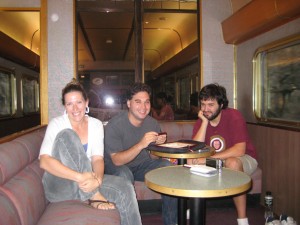
Me with my dear friends Becca and Travis in our usual booth aboard the Indian Pacific with Scrabble all set up
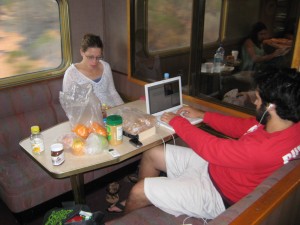
A snapshot of life on the Indian Pacific. Laptops, fruit, Nutella and desolation passing by out the window
The View
There is nothing like the experience of watching an entire continent pass by outside your window. As we watched the terrain change we couldn’t help but feel like explorers venturing into the Australian interior for the very first time. Big red kangaroos could be seen from the train and sometimes would even jump along with the train as we’d move through an area keeping up pace. The Nullabor plains had us traverse the longest, straightest piece of train trak in the world. 297 miles without a single bend or change in elevation! Even when there was absolutely nothing to see, we felt like we were seeing everything.
Conclusion
If you enjoy an adventure and can keep yourself entertained for long periods of time, I couldn’t recommend the Indian-Pacific enough. The stops we made, towns we visited and people we met were quirky, but that is exactly what we were hoping for and the Indian-Pacific delivered in a big way. Being from major US cities, experiencing the type of remote desolation the Indian Pacific traverses is in and of itself an incredible experience. Even though in reality all we did was sit around for three days, by the time we reached Perth we all felt as if we had accomplished something significant. It’s hard to describe in words how satisfying a trip on the Indian-Pacific can be. You’ll just need to experience it for yourself!

